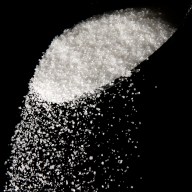I’ve tried soya cheese and soya hot dogs and have this to say about them: No.
But maybe I’ll have better luck with another product that mimics the real thing: synthetic diesel.
The diesel we’ve all come to know is refined from crude oil, just like gasoline. Don’t know if you’ve noticed, but lots of folks think we should scale back a bit from the 400 million gallons of gasoline we use every day in North America.
Nothing is going to replace that kind of volume overnight, but over the long haul synthetic diesel looks quite promising — especially if it’s for vehicular consumption.
For one thing, modern diesel engines don’t give a hoot if diesel is sourced from crude or palm oil. We can also use existing petroleum-based infrastructures (like gas stations). And when we source it from other stuff like palm oil or natural gas, it’s cleaner.
We can also source it from renewable stuff — like algae, certain seeds, used cooking oil and animal fats. You can even use green matter that would otherwise go to landfill. When you use icky stuff like that, the product is called biodiesel, a form of synthetic diesel. Basically, if it doesn’t come from crude, it’s synthetic.
You can also make ethanol from biomass, but vehicles are more efficient running on diesel.
The Germans were the first to develop synthetic diesel, way back in the 1920s. They developed a way to make liquid fuel from coal, a process that is still used today. Synthetic diesel can also be made from the gunk that’s in our tar sands.
But its real future is tied to when we can get the right feedstocks — feedstocks that are renewable, carbon neutral and can be produced in great whacks of volume.
The best hopes so far are algae and a non-edible plant called jatropha, which has a seed that contains high amounts of oil. Jatropha is also advantageous, because it can grow in marginal soil, doesn’t have to be fertilized or watered and contains only small amounts of Free Fatty Acid (FFA), which complicates the process to convert it to biodiesel.
But a Canadian company, called BIOX, has pioneered a way to make biodiesel from feedstocks with high FFA content, such as animal fat or crude palm oil.
In fact, BIOX’s new plant in Hamilton, Ontario, is the largest continuous flow biodiesel facility in the world. It has the potential to produce 67 million litres a year.
Sounds like we’re getting somewhere.
















